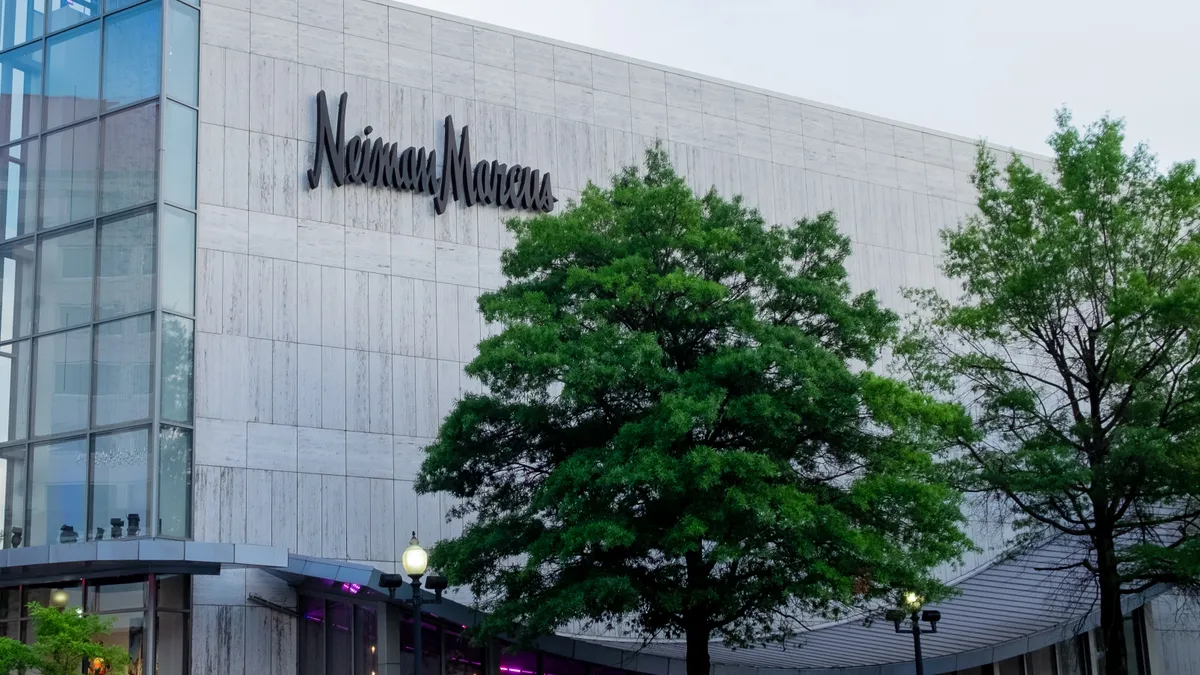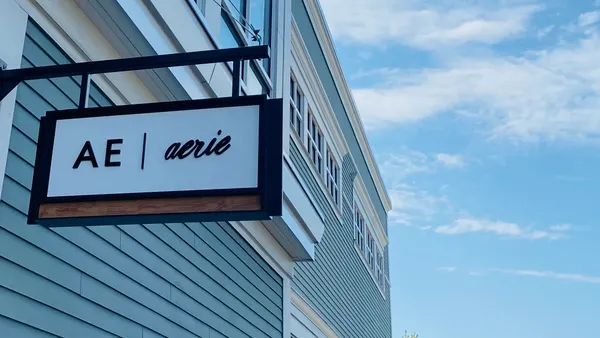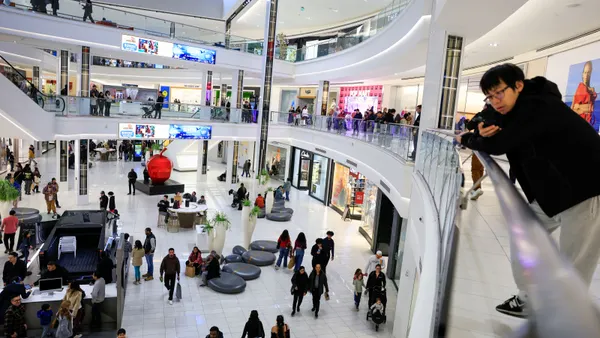Dive Brief:
- Neiman Marcus is on track to emerge from Chapter 11 in the fall of this year, Geoffroy van Raemdonck said in an emailed press release this week.
- To date, 90% of the luxury department store's footprint is open either for curbside pickup, private appointment, full shopping or some combination. Raemdonck said that the company's performance in recent weeks "has been strong thanks to the success of our omnichannel experience."
- This week, the retailer received final court approval for $250 million in immediate financing to help it through the court process, and an additional $150 million "as needed" after Sept. 4. The debtor-in-possession funds will "ensure business continuity" as Neiman goes through the reopening process as well as finance fall inventory purchases and fund the expansion of Neiman's digital offering, Raemdonck said.
Dive Insight:
Except for a lender accusing Neiman of breaching its loan terms, and past reports that some lenders wanted Neiman to drop its reorganization plan and sell itself, the luxury retailer's bankruptcy appears to be proceeding relatively smoothly.
Attorneys for Neiman Marcus said in a court hearing that the company had been working behind the scenes to resolve objections, both formal and informal, that various stakeholders had to its financing plan. In a court filing, the company described the DIP facility, which provides three draws totaling $675 million, as "heavily-negotiated."
The DIP is crucial for any company to continue operating in bankruptcy, as it provides funds to pay employees, vendors, landlords and other parties and creditors. Going forward, Neiman has an agreement with lenders to give them ownership stakes in the company, provide a $750 million exit financing facility, and leave the retailer with a capital structure on exiting bankruptcy that would cut out $4 billion in existing debt.
Debt relief is crucial to Neiman's long-term survival. The retailer, unlike other legacy companies in the industry to go bankrupt in recent years, has deep e-commerce penetration, a relatively modest physical footprint, and a still-healthy brand. Its debt load, leftover from multiple private equity buyouts, both added interest costs to its obligations and sucked away money that could have gone back into the business.
That the retailer has a deal with lenders to take it over is a sign that stakeholders see underlying value in the business. Neiman Marcus will still have challenges, though, on the other side of bankruptcy. Many of them were created by the COVID-19 crisis.
Along with forcing the closure of Neiman's stores earlier this year, the pandemic brought tourism to a halt and sparked an economic recession. Neiman's stores are centered in destination malls and cities, making the tourism slowdown a particular challenge.
Likewise, economic recessions are historically hard on luxury retailers as consumers pare back discretionary spending and go hunting for value. Neiman Marcus, with high-end brands and more exotic fare, could be vulnerable.















